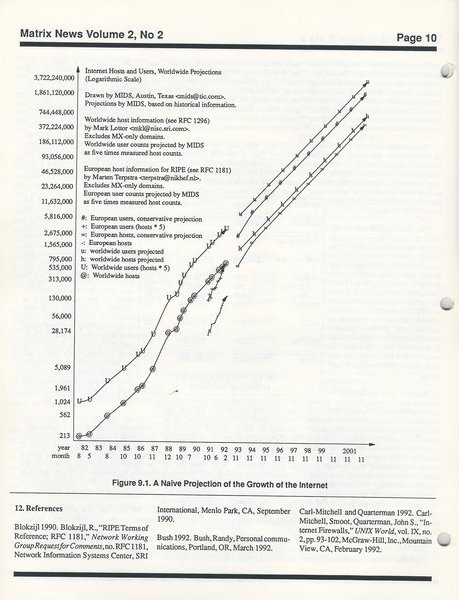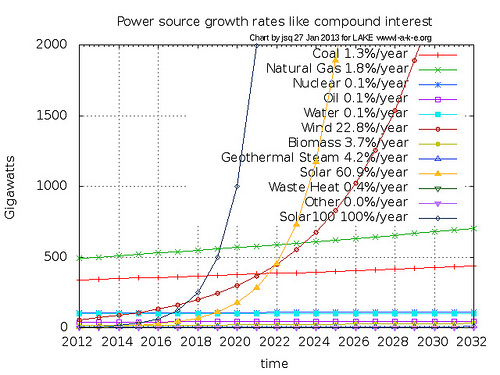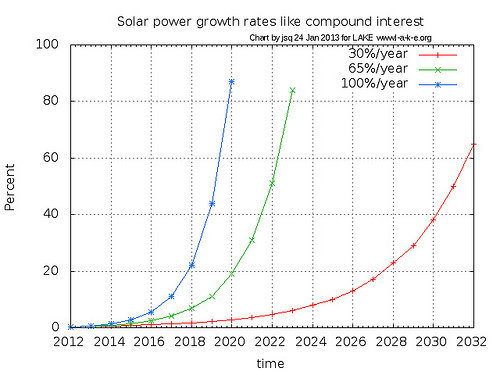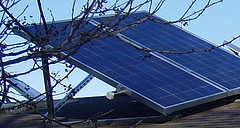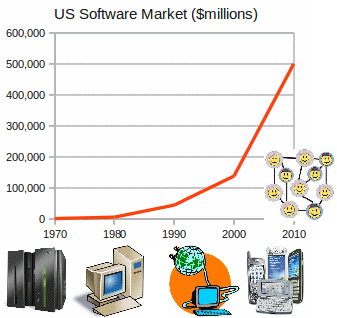Jeff Bezos sent his biographer to find the graphs; that’s when I learned about this. The Everything Store: Jeff Bezos and the Age of Amazon, Paperback, August 12, 2014, by Brad Stone (PDF, google book)
Intrigued by Shaw’s conviction about the inevitable importance of the Internet, Bezos started researching its growth. A Texas-based author and publisher named John Quarterman had recently started the Matrix News, a monthly newsletter extolling the Internet and discussing its commercial possibilities. One set of numbers in particular in the February 1994 edition of the newsletter was startling. For the first time, Quarterman broke down the growth of the year-old World Wide Web and pointed out that its simple, friendly interface appealed to a far broader audience than other Internet technologies. In one chart, he showed that the number of bytes—a set of binary digits —transmitted over the Web had increased by a factor of 2,057 between January 1993 and January 1994.
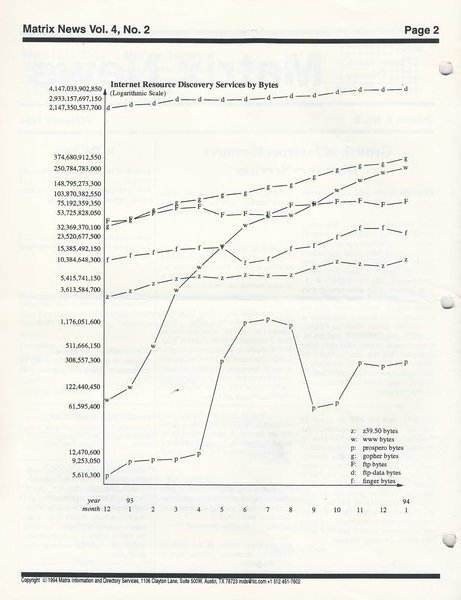
Internet Resource Discovery Services by Bytes, John S. Quarterman, Matrix News 4.2, MIDS, February 1994.Another graphic showed Continue reading
